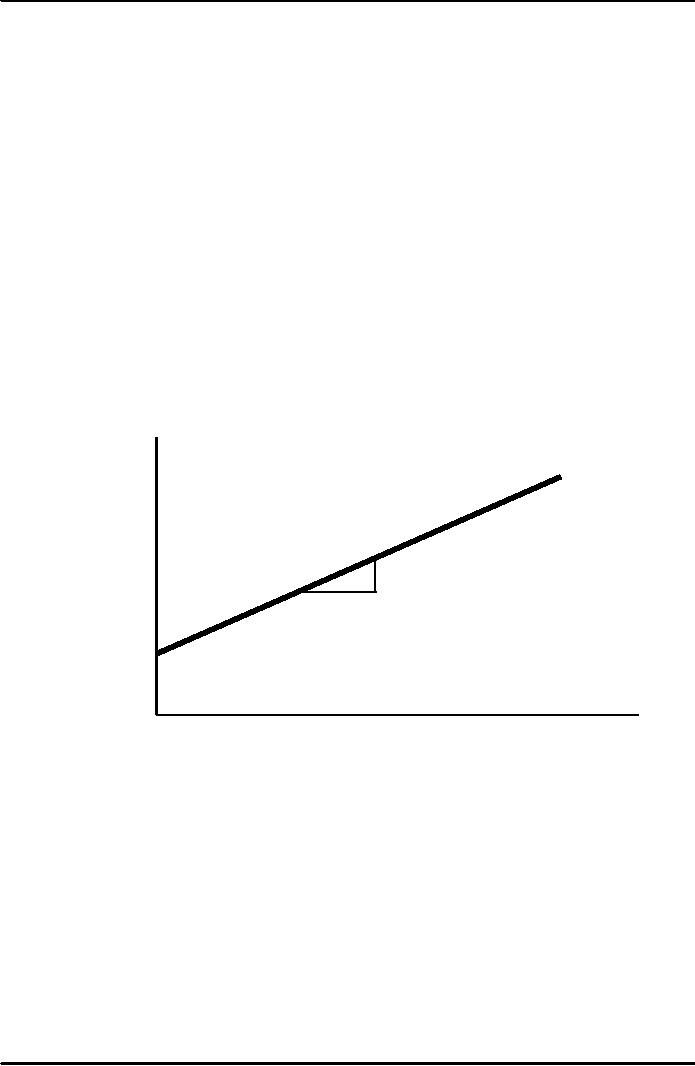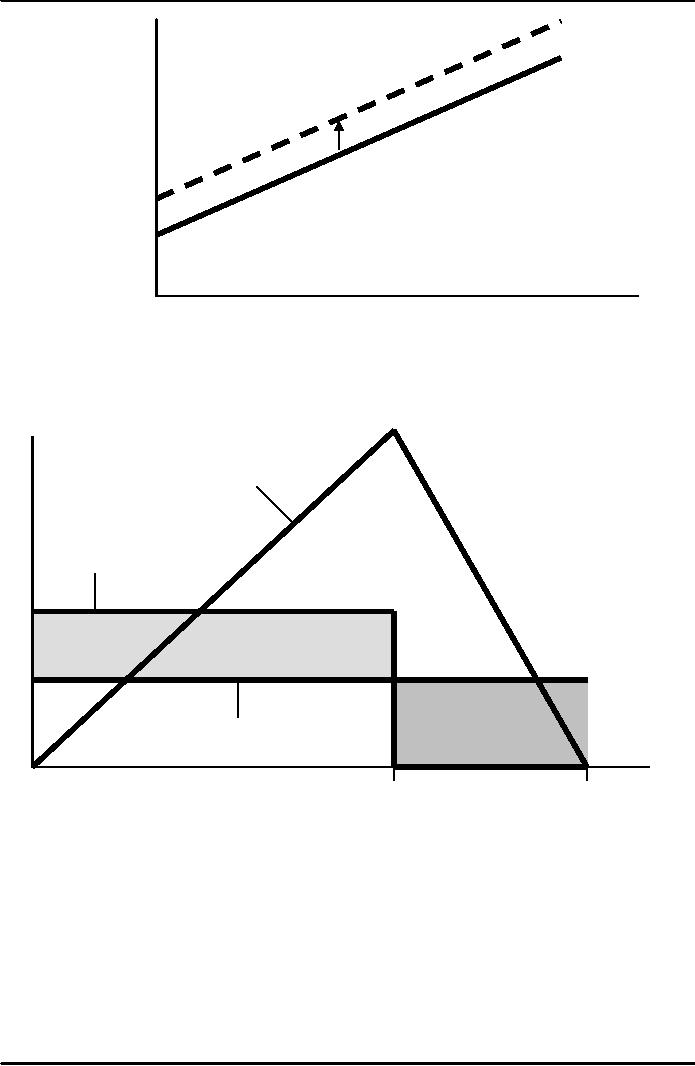 |
CONSUMPTION (Continued…):The Life-cycle Consumption Function |
| << CONSUMPTION (Continued…):Consumer Preferences, Constraints on Borrowings |
| INVESTMENT:The Rental Price of Capital, The Cost of Capital >> |

Macroeconomics
ECO 403
VU
LESSON
39
CONSUMPTION
(Continued...)
John
Maynard Keynes and the
Consumption Function
The
consumption function exhibits
three properties that Keynes
conjectured.
1.
The marginal propensity to
consume c is between zero
and one.
2.
The average propensity to
consume falls as income
rises.
3.
Consumption is determined by current
income.
Simon
Kuznets and the Consumption
Puzzle
�
The
failure of the secular-stagnation
hypothesis and the findings
of Kuznets both
indicated
that
the average propensity to
consume is fairly constant
over time.
�
This
presented a puzzle: why did
Keynes' conjectures hold up
well in the studies
of
household
data and in the studies of
short time-series, but fail
when long time series
were
examined?
Irving
Fisher and Intertemporal
Choice
�
The
economist Irving Fisher
developed the model with
which economists analyze
how
rational,
forward-looking consumers make
intertemporal choices-- that
is, choices
involving
different periods of
time.
�
The
model illuminates
the
constraints consumers
face,
�
the
preferences they have,
and
�
how
these constraints and
preferences together determine
their choices about
�
consumption
and saving.
When
consumers are deciding how
much to consume today versus
how much to consume
in
the
future, they face an
intertemporal
budget constraint,
which
measures the total
resources
available for consumption
today and in the future.
The generalization
is:
C2
Y2
C1
+
r
+
1+r
=
Y1 +
1
Franco
Modigliani and the
life-cycle Hypothesis
In
the 1950's, Franco
Modigliani, Ando and
Brumberg used Fisher's model
of consumer
behavior
to study the consumption
function. One of their goals
was to study the
consumption
puzzle.
According to Fisher's model,
consumption depends on a person's
lifetime income.
Modigliani
emphasized that income varies
systematically over people's
lives and that saving
allows
consumers to move income
from those times in life
when income is high to those
times
when
income is low. This
interpretation of consumer behavior
formed the basis of his
life-
cycle
hypothesis.
The
Hypothesis
�
Most
people plan to stop working
at about age 65, and
they expect their incomes to
fall
when
they retire, but don't
want a drop in standard of
living characterized by
consumption.
�
Suppose
a consumer expects to live
another T years, has wealth
of W and expects to
earn
income
Y until she retires R years
from now.
What
level of consumption will
the consumer choose to have
a smooth consumption
over
her life?
185

Macroeconomics
ECO 403
VU
The
Life-cycle Consumption
Function
�
The
Lifetime resources of consumer
for T years are wealth W
and lifetime earnings of R x
Y
(assuming
interest rate to be
zero).
�
To
have smoothest consumption
over lifetime, she divides
such that
C
= (W + RY) / T
or
C
= (1 / T)W + (R / T)Y
�
If
she expects T = 50 and R =
30, then the consumption
function will be
C
= 1 / 50W + 30/50Y or
C
= 0.02W + 0.6Y
�
Generalizing
for Aggregate Consumption
function of the
economy:
C
= αW + βY
Where,
α = MPC out of
Wealth
β
= MPC
out of Income
Consumption,
C
β
1
αW
Income,
Y
Solving
the Consumption
Puzzle
�
According
to Life-cycle consumption
function,
APC
= C/Y = α
(W/Y) +
β
�
Because,
in short periods, wealth
does not vary
proportionately with incomes,
High incomes
corresponds
to Low APC.
�
But
over longer periods, wealth
and incomes grow together,
resulting in constant W/Y
ratio
and
hence a constant APC
186

Macroeconomics
ECO 403
VU
Consumption,
C
αW2
αW1
Income,
Y
The
Upward Shift prevents the
APC from falling as income
increases. Thus solving
Keynes's
puzzle
Consumption,
Income and Wealth over
Life-cycle
$
Wealth
Income
Savings
Dissavings
Consumption
Retirement
End
of
Begins
Life
Consumption
and Saving of
Elderly
�
Research
findings show that elderly
people do not dissave as
much as the life cycle
model
predicts.
�
In
other words, the elderly do
not run down their
wealth as quickly as one
would expect if
they
were trying to smooth their
consumption over their
remaining years of
life.
�
Reasons
They are
concerned about unpredictable
expenses. Additional saving
that rises from
uncertainty
is called precautionary saving.
This may be due to expecting
a long life and
to
plan for a longer period of
retirement.
187

Macroeconomics
ECO 403
VU
�
It is not
completely persuasive considering
the availability of annuity
schemes of
insurance
companies and public health
insurance plans.
They may
want to leave bequests to
their children
Milton
Friedman and the
Permanent-Income Hypothesis
�
In
1957, Milton Friedman
proposed the permanent-income
hypothesis to explain
consumer
behavior.
�
Its
essence is that current
consumption is proportional to permanent
income. Friedman's
permanent-income
hypothesis complements Modigliani's
life-cycle hypothesis: both
use
Fisher's
theory of the consumer to
argue that consumption
should not depend on
current
income
alone.
But
unlike the life-cycle
hypothesis, which emphasizes
that income follows a
regular pattern
over
a person's lifetime, the
permanent-income hypothesis emphasizes
that people
experience
random and temporary changes
in their incomes from year
to year.
Friedman
suggested that we view
current income Y as the sum
of two components,
permanent
income YP and transitory
income YT.
Y
= YP + YT
�
Permanent
Income is the part of income
that people expect to
persist in the
future.
�
Transitory
income is the part of income
that people do not expect to
persist.
�
Friedman
reasoned that consumption
should depend primarily on
permanent income
because
consumers use savings and
borrowings to smooth consumption in
response to
transitory
changes in income.
�
Friedman
approximation of consumption function
is:
C
= αYP
�
While
Average propensity to consume
is:
APC
= C/Y = αYP /Y
When Y >
YP, APC Falls
When Y <
YP, APC rises
Robert
Hall and the Random-Walk
Hypothesis
Robert
Hall was first to derive
the implications of rational
expectations for consumption.
He
showed
that if the permanent-income
hypothesis is correct and if
consumers have
rational
expectations,
then changes in consumption
over time should be
unpredictable. When
changes
in
a variable are unpredictable,
the variable is said to
follow a random
walk.
According
to Hall, the combination of
the permanent-income hypothesis
and rational
expectations
implies that consumption
follows a random
walk.
188
Table of Contents:
- INTRODUCTION:COURSE DESCRIPTION, TEN PRINCIPLES OF ECONOMICS
- PRINCIPLE OF MACROECONOMICS:People Face Tradeoffs
- IMPORTANCE OF MACROECONOMICS:Interest rates and rental payments
- THE DATA OF MACROECONOMICS:Rules for computing GDP
- THE DATA OF MACROECONOMICS (Continued…):Components of Expenditures
- THE DATA OF MACROECONOMICS (Continued…):How to construct the CPI
- NATIONAL INCOME: WHERE IT COMES FROM AND WHERE IT GOES
- NATIONAL INCOME: WHERE IT COMES FROM AND WHERE IT GOES (Continued…)
- NATIONAL INCOME: WHERE IT COMES FROM AND WHERE IT GOES (Continued…)
- NATIONAL INCOME: WHERE IT COMES FROM AND WHERE IT GOES (Continued…)
- MONEY AND INFLATION:The Quantity Equation, Inflation and interest rates
- MONEY AND INFLATION (Continued…):Money demand and the nominal interest rate
- MONEY AND INFLATION (Continued…):Costs of expected inflation:
- MONEY AND INFLATION (Continued…):The Classical Dichotomy
- OPEN ECONOMY:Three experiments, The nominal exchange rate
- OPEN ECONOMY (Continued…):The Determinants of the Nominal Exchange Rate
- OPEN ECONOMY (Continued…):A first model of the natural rate
- ISSUES IN UNEMPLOYMENT:Public Policy and Job Search
- ECONOMIC GROWTH:THE SOLOW MODEL, Saving and investment
- ECONOMIC GROWTH (Continued…):The Steady State
- ECONOMIC GROWTH (Continued…):The Golden Rule Capital Stock
- ECONOMIC GROWTH (Continued…):The Golden Rule, Policies to promote growth
- ECONOMIC GROWTH (Continued…):Possible problems with industrial policy
- AGGREGATE DEMAND AND AGGREGATE SUPPLY:When prices are sticky
- AGGREGATE DEMAND AND AGGREGATE SUPPLY (Continued…):
- AGGREGATE DEMAND AND AGGREGATE SUPPLY (Continued…):
- AGGREGATE DEMAND AND AGGREGATE SUPPLY (Continued…)
- AGGREGATE DEMAND AND AGGREGATE SUPPLY (Continued…)
- AGGREGATE DEMAND AND AGGREGATE SUPPLY (Continued…)
- AGGREGATE DEMAND IN THE OPEN ECONOMY:Lessons about fiscal policy
- AGGREGATE DEMAND IN THE OPEN ECONOMY(Continued…):Fixed exchange rates
- AGGREGATE DEMAND IN THE OPEN ECONOMY (Continued…):Why income might not rise
- AGGREGATE SUPPLY:The sticky-price model
- AGGREGATE SUPPLY (Continued…):Deriving the Phillips Curve from SRAS
- GOVERNMENT DEBT:Permanent Debt, Floating Debt, Unfunded Debts
- GOVERNMENT DEBT (Continued…):Starting with too little capital,
- CONSUMPTION:Secular Stagnation and Simon Kuznets
- CONSUMPTION (Continued…):Consumer Preferences, Constraints on Borrowings
- CONSUMPTION (Continued…):The Life-cycle Consumption Function
- INVESTMENT:The Rental Price of Capital, The Cost of Capital
- INVESTMENT (Continued…):The Determinants of Investment
- INVESTMENT (Continued…):Financing Constraints, Residential Investment
- INVESTMENT (Continued…):Inventories and the Real Interest Rate
- MONEY:Money Supply, Fractional Reserve Banking,
- MONEY (Continued…):Three Instruments of Money Supply, Money Demand